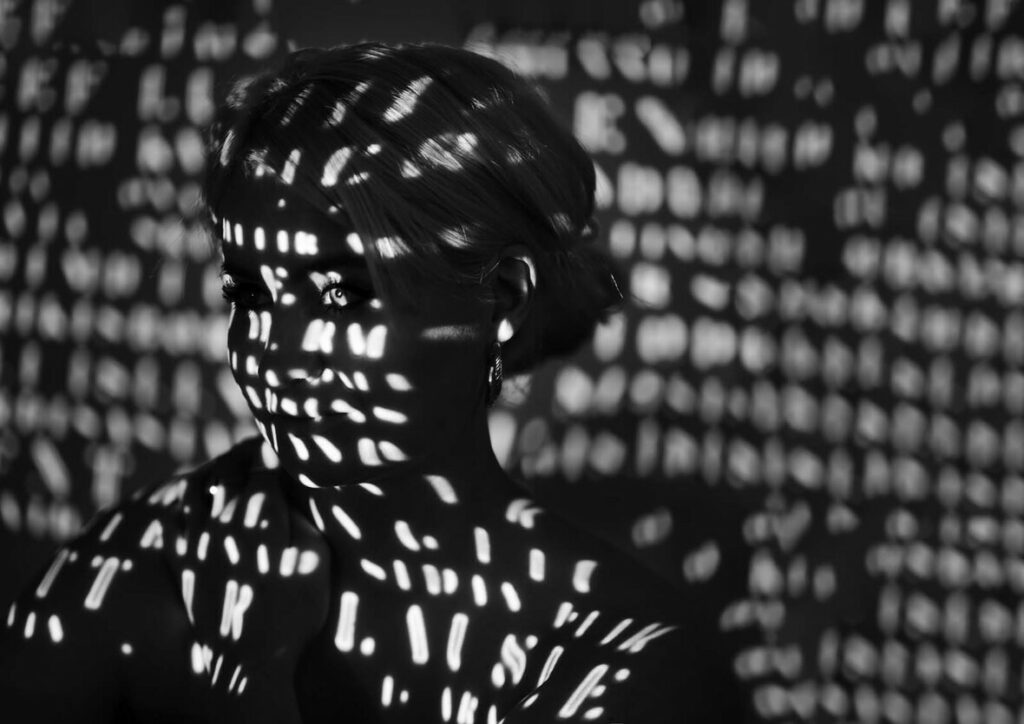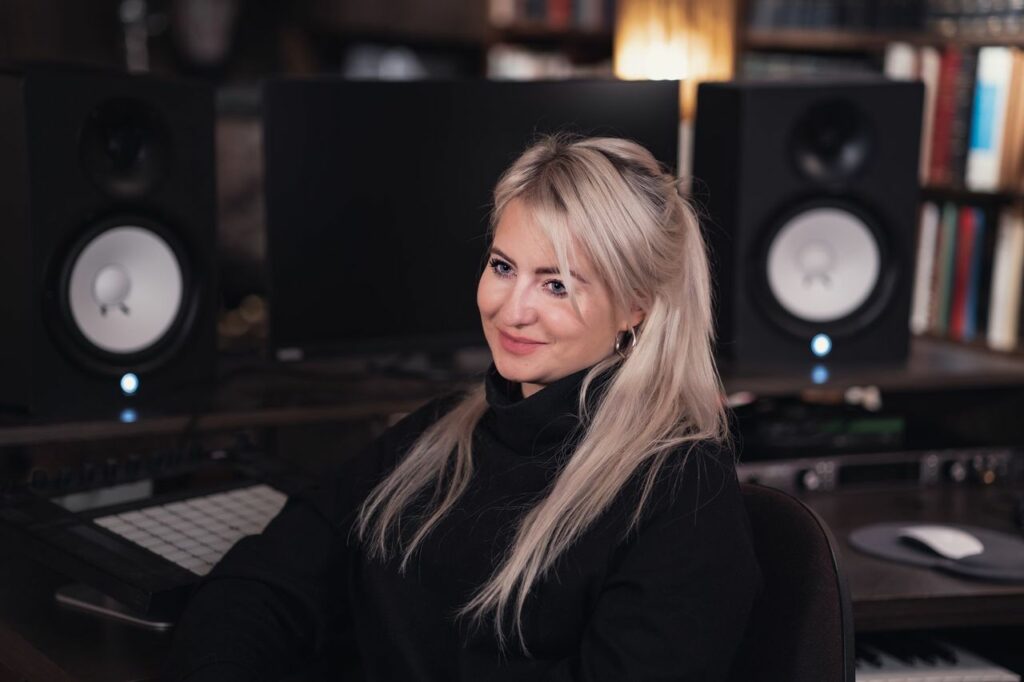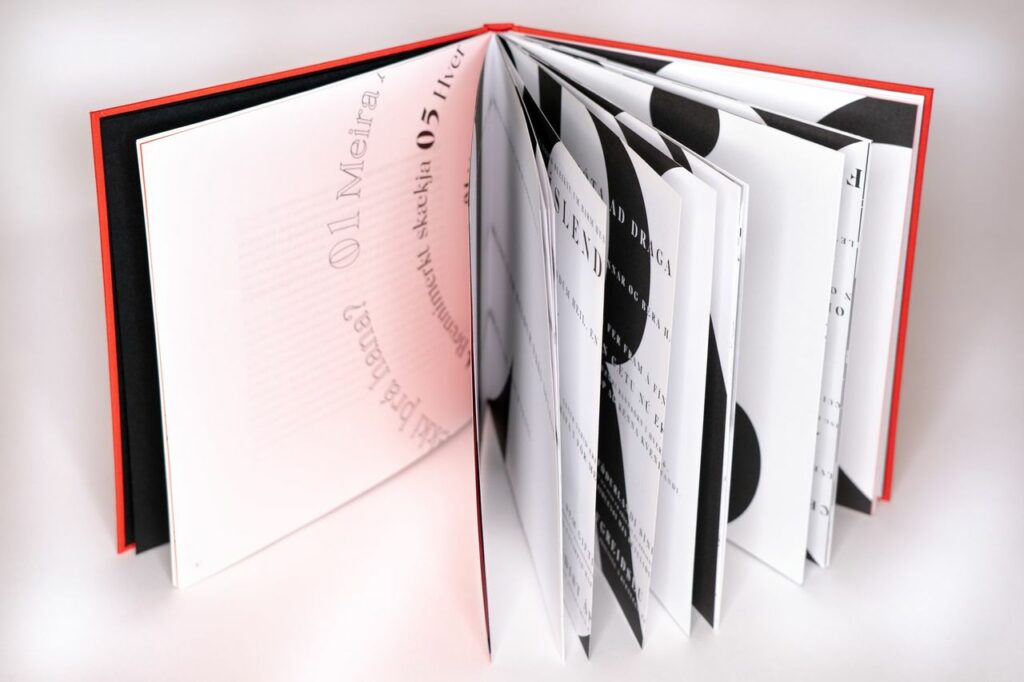Girl from the black stuff – we meet Icelandic post-classical composer INKI
“It is much more powerful to ask questions, rather than trying to answer them”

INKI is an Icelandic composer who has created an ‘augmented’ format for her new album Quite The Situation. This involves a book and an album, with an NFC chip connecting them by linking to the artist’s Spotify account and an augmented reality app that makes the text flow across the page.
The starting point for the LP were local World War Two articles written about allied soldiers ‘stealing’ the nation’s women during the occupation of Reykjavík, and aims to dissect this dark, misogynist period of shared history between Iceland, the UK and America. Eager to know more, we caught up with INKI herself and asked her to explain…
The title for one of the tracks you’ve shared, ‘Who Wouldn’t Desire Her?’ takes its name from an old Icelandic newspaper headline, which implied that Icelandic women should not mix with foreigners. What was it about this line that inspired you?
This is a sentence from an Icelandic newspaper written during WWII, the headline is ‘The Icelandic Maiden and The Situation’. The foundation for this piece are articles written between 1940-1945, when Iceland had just been occupied by the Allies. At the time people would write in the newspapers to voice their opinions on current matters, a little like social media today.
In Iceland we have given it the historic term The Situation, the situation being ‘What can we do about the soldiers stealing our women?’. After reading a lot of those articles I wasn‘t really interested in The Situation’ so much, I was interested more in the conversation and the words the writers used to describe and control women’s sexual behaviour. I started questioning how the current conversation will be seen 80 years from now, because those articles written only 80 years ago are now so ridiculous that they are almost funny. Still I believe the writers weren‘t stupid, this was simply considered to be normal.
‘The Icelandic Maiden, Who Wouldn‘t Desire Her?’ is a great example of all of this. The writer is claiming that obviously Icelandic women are the most beautiful women of all, but they should see their pride in only being with Icelandic men and not date soldiers. It‘s manipulative, racist, and simply not true – who says Icelandic women are prettier than other women? Most likely the writer had never even travelled out of Iceland, but I do like his creative approach (which seems to be designed to manipulate women).
Why explore newspaper articles and public letters to do with The Situation? Was it to do with them being public media?
My musical composition process always starts with a concept, and usually it is something in my environment that affects that concept. I began working on the research for this piece two years ago, while I was living in California. The working title for this piece was ‘Iceland is green, Greenland is icy’, a sentence I heard many times a week when Americans asked me where I was from. I found it interesting that in Iceland we are taught a lot about the common history of our nations, Americans know a fact from ‘Mighty Ducks 2’.
To better understand our common history, I began reading the articles that had been written during WWII, some were from Icelanders others from the Allies. Along the way my interest shifted from being about our common history to becoming about how we speak about women’s sex lives.
What are some of the ongoing effects of The Situation in Iceland today?
That‘s a great question which I don‘t really think I am the right person to answer. The question I am asking with this piece relates to the ongoing effects, it is ‘How will we see the current conversation about female sexuality 80 years from now?’.
I think being an artist it is much more powerful to ask questions, rather than trying to answer them. Each person enjoying the piece should have the space to make up their own opinion on that, if at all. Maybe some feel that there are no ongoing effects?
Internationally – from the abortion ban in Poland to the death of Sarah Everard in the UK – the past year has shed a much brighter light on women’s issues than usual. Where do you think Iceland’s position is in the international conversation? Nationally, does it have a progressive stance compared to other countries?
Yes, we are progressive and we love mentioning that we are number one when it comes to global gender equality. But being number one doesn‘t mean that you are equal. What has been happening globally just sheds a light on how important it is to fight for equal rights, because this reminds us that what has been won can also be lost.
Many musicians and critics relate slow-moving, ambient music with political apathy – an unconscious parallel between ‘slowness’ and ‘laziness’. But for many others – particularly those who have visited or reside in Iceland – ambient electronic and modern classical clearly has the opposite effect. To them, it’s mobilising. In your view, what about this kind of music relates to the political sphere, and why does it motivate change?
I don‘t really know why the music became what it is. I don‘t like to take too much control over the composition process, I like to set some ground rules or experiments and let that lead the musical outcome. This time I had decided to record each musician individually so I would have full control of the tracks, that way I could blend together the recording and the composition process.
I hope this process and the music is thought provoking and that it will be a spark to some interesting conversation. The power of good conversation cannot be underestimated, I think that‘s how smart people have most often managed to change my opinion or shed a light to something I hadn‘t thought of before.
Could you tell us a little bit more about the eight female (three American, five Icelandic) musicians who you recorded on the album? Who are they?
Yes, I would love to. There are some killer musicians playing this album, and I believe all of them have their own solo careers so if you want to dig deeper you can find them on Spotify.
Before working on the album Quite the Situation, I mainly knew guitarist Hafdís Bjarnadóttir as an experimental composer. We met through our shared interest in performing pieces that call for unorthodox playing methods. Like if you need someone to play a rock or a hammer in your piece, we are musicians you could call for those types of gigs. I always knew she was a great guitarist as well, so I was very excited to have her come to my studio and play. During the recording session I asked her to play a “full blown disco guitar”, like in the song ‘Branded A Whore’. But we also experimented with stranger sounds like recording a steel coffee cup on the strings during the song ‘Sex In a Car’.
Ingibjörg Elsa Turchi is playing the bass, she is the only musician I recorded that I hadn‘t worked with before. She is a bass legend here in Iceland, performing with many known acts, but she also has her own solo career where she experiments with the instrument, releasing a record Meliae in 2020. I think her genius can really be heard in the song ‘Rootless Little Girl’, but in that song we decided that she wouldn‘t play a simple bass but really play her own bass melody.

Then there are three violinists playing on the album; Honor Monaco, Kristina Dutton and Sigrún Harðardóttir. Honor is a good friend of mine from Mills College, during our masters studies we frequently performed free improvisations together, she played the violin and I sang.
I first worked with Kristina Dutton when we composed and performed a piece to a video work by visual artist Kim Anno. She is both an amazing composer and a violinist, and has recorded over 50 albums. Sigrún Harðardóttir runs her own Suzuki music school and also tours with many big acts, the biggest one probably being Ólafur Arnalds. So she has nailed that soft, airy violin sound.
Last but not least there are two cellists; Þórdís Gerður Jónsdóttir and Marissa Deitz. Marissa is another Mills graduate, but she is both an experimental composer and does singer-songwriter projects like the band Sucker Crush. Þórdís has graduated from the jazz academy here in Iceland and is now studying in Denmark, a perfect ear for improvisations but can also very easily win your heart with a classical Bach Suite. And then there is me, playing electronics.
Could you tell us a little bit more about the recording process? What is your very own Stúdíó Bókó like?
I asked each musician to meet with me individually and record. I had composed and written down sheet music but I also left a lot of space for improvisation. I decided to only record female musicians and each recording session began with us drinking a cup of coffee reading over the WWII articles and talking about our experiences. When we then moved into the recording studio we were all mentally in the same space. I believe it had a lot of effect on the final outcome.
I recorded the Icelandic musicians in my studio, Stúdíó Bókó, but met the American musicians at The Headlands Art Residency, perfect place to work on this project because it‘s located in an old military base.
Stúdíó Bókó is in an old library that my Grandpa created 70 years ago, he collected books for a hobby. He probably rolled over in his grave when he heard his office had been turned into a music studio, but he hasn‘t come back to haunt me. So I only believe there are good ghosts hanging out there now and occasionally a bird flies in through the chimney, which is terrifying when you are focusing. One day I want to record something in the studio and place a mic in the chimney, I love experimenting like that.
Why choose the combined media of album, book and augmented reality?
I have done a lot of sound installations, most of them including both visuals and sound. None of them had music that could stand independently without the visuals, so I decided that for the first time I wanted to create an installation that would have independent elements, such as the album and the book release, so that together they would form one whole work.
This summer the Reykjavik Arts Festival premiered the sound installation, for which the music will be mixed to octaphonic sound system and it includes two video works.
Both the cover of the vinyl record has augmented reality and the book work. In that sense, the sentences that inspired this piece flow over the cover of the album and across the pages of the book.

Perhaps you’ve already asked and answered this musically, but for those who are interested in the project and have yet to check it out; where do you see the conversation about female sexuality heading, in Iceland and globally, 80 years from now?
I like that question but I have no answer to it. The whole point of this piece is to ask questions about the current conversation, not really for me to answer them. I want to give people space to make up their own opinions about what the future holds.
For more details, including a vinyl edition of the album limited to 30 copies, click here
Jude Iago James